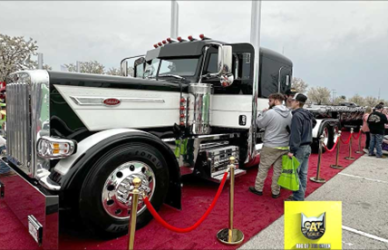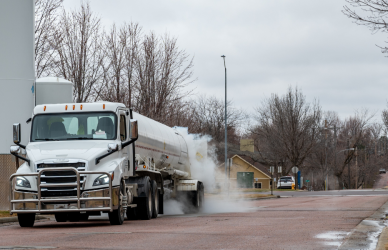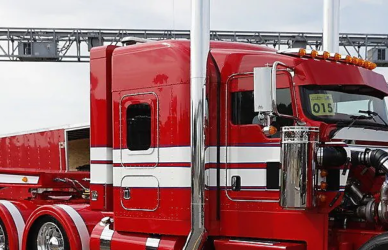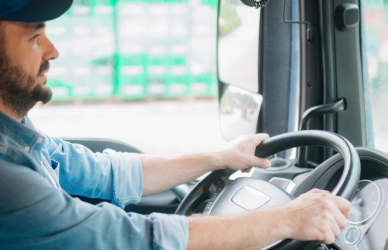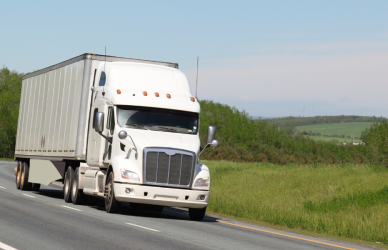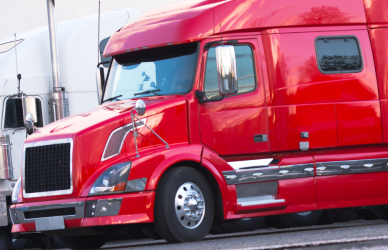The trucking industry is ever-evolving, and in recent years we’ve seen technological advancements move forward at a rapid pace. These advances in technology have changed the way we approach the transportation of goods in this country. Regardless of how you feel about it, one of these innovations is autonomous trucks. The introduction of these vehicles is making waves in a number of ways.
One of the future implications of this technology is an updated approach to the age-old practice of truck platooning, which historically involves a group of trucks traveling closely together in a convoy. With the introduction of autonomous vehicles, the practice of truck platooning has undergone substantial changes, promising numerous benefits while also posing certain challenges.
Evolution of Truck Platooning
Truck platooning, also known as cooperative adaptive cruise control, involves a group of trucks traveling closely together in a convoy, typically with the help of advanced technologies. This practice has evolved significantly over the years, driven by advancements in vehicle automation and communication systems.
Initially, truck platooning relied on human drivers maintaining a close distance between vehicles, benefiting from reduced air resistance and improved fuel efficiency. However, this method had limitations due to variations in human reaction times and driving behaviors. To overcome these limitations, the introduction of autonomous vehicles brought about a paradigm shift in truck platooning.
With autonomous truck platooning, the convoy is led by a self-driving truck equipped with advanced sensors, cameras, and communication systems. These technologies enable the vehicles within the platoon to communicate with each other, synchronize their movements, and maintain a safe and consistent distance. Autonomous systems can make real-time adjustments, taking into account factors such as traffic conditions, road obstacles, and weather conditions.
The evolution of truck platooning has been supported by advancements in vehicle-to-vehicle (V2V) and vehicle-to-infrastructure (V2I) communication systems. These technologies facilitate the exchange of data and enable the platoon to react swiftly to environmental changes. Moreover, the integration of artificial intelligence and machine learning algorithms has enhanced the decision-making capabilities of autonomous systems, making truck platooning safer and more efficient.
Advantages of Autonomous Truck Platooning
There are several advantages to autonomous truck platooning, ranging from increased fuel efficiency to an enhanced driver experience.
Enhanced Fuel Efficiency
Autonomous truck platooning optimizes fuel consumption by reducing aerodynamic drag and enabling precise speed and distance control between vehicles. This efficiency leads to significant cost savings and a reduced environmental footprint.
Improved Safety
With autonomous vehicles leading the platoon, the theory is that human error can be minimized. Advanced sensors and real-time communication between trucks enable faster reaction times, enhancing overall safety on the road.
Increased Traffic Flow
This is, once again, purely theoretical, but some feel that by utilizing advanced technology and maintaining close proximity, autonomous truck platooning optimizes road space utilization. This allows for better traffic flow, reducing congestion and improving overall transportation efficiency.
Enhanced Driver Experience
Instead of focusing on long hours behind the wheel, truck drivers can take on supervisory roles, monitoring the autonomous systems and ensuring a smooth operation. This transition offers an opportunity to improve the quality of work-life balance for truckers.
Challenges of Autonomous Truck Platooning
Just like there are advantages to this evolution in trucking, there are also disadvantages, including the reliability of the tech and limited flexibility.
Technological Reliability
The successful implementation of autonomous truck platooning relies heavily on the reliability and performance of advanced technology systems. Any technical malfunction or system failure can disrupt the entire platoon and potentially lead to accidents.
Regulatory Framework
The widespread adoption of autonomous truck platooning demands comprehensive regulations to address safety standards, liability issues, and potential legal complications. Policymakers and industry stakeholders must collaborate to establish a robust regulatory framework that ensures public safety while promoting innovation, and at this time, many are still working through what this looks like. For example, California recently moved a bill forward that would require all self-driving vehicles over 10,000 pounds to always have a human operator behind the wheel.
Infrastructure Requirements
Autonomous truck platooning necessitates the deployment of smart infrastructure, including advanced sensors, communication systems, and dedicated platooning lanes. Significant investments and infrastructure upgrades will be required to support the widespread implementation of this practice, and we’re still a long way from making this a reality.
Limited Flexibility
Platoon operations rely on a coordinated group of vehicles following a predetermined route and schedule. This lack of flexibility may pose challenges in adapting to unexpected events, changing routes, or accommodating different types of cargo.
The Future of Truck Platooning
As technology continues to advance, this new way of truck platooning may be attractive to some fleets. Here’s what some experts believe the future holds for truck platooning, though this future is still looking to be pretty far on the horizon, with many obstacles to overcome before it can be achieved.
Increased Automation
Further advancements in autonomous vehicle technology will likely lead to higher levels of automation within truck platoons. This would enable platoons to operate with less human intervention, reducing the need for drivers in the same capacity as what we are accustomed to.
Integration with Smart Infrastructure
The integration of autonomous truck platooning with smart infrastructure systems, such as intelligent traffic management and vehicle-to-infrastructure communication, will facilitate seamless operations and optimize traffic flow.
Expanded Industry Adoption
As the benefits of autonomous truck platooning become more evident, industry-wide adoption is expected to accelerate. Fleets and logistics companies will embrace this technology to enhance their operations, reduce costs, and stay competitive in the evolving market.
Collaboration and Standardization
Stakeholders from the trucking industry, technology providers, and regulatory bodies must collaborate to establish standardized practices, protocols, and safety regulations. This collaboration will ensure a harmonized and efficient implementation of autonomous truck platooning across different regions and jurisdictions.
Autonomous truck platooning represents a significant change to an existing concept, promising numerous benefits such as improved fuel efficiency, enhanced safety, and increased traffic flow. However, challenges related to technology reliability, regulations, infrastructure, and flexibility must be addressed for its successful integration into mainstream transportation. As autonomous vehicles become more prevalent, truck platooning will continue to evolve, and so will the industry, transforming the way goods are transported and shaping the future of the trucking industry.




